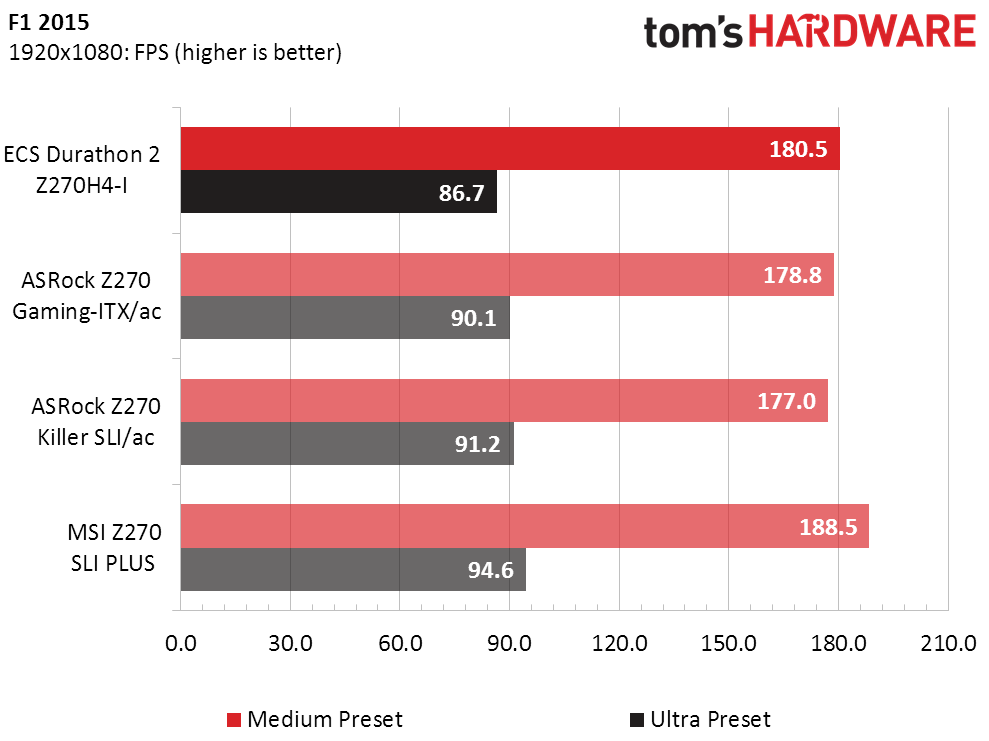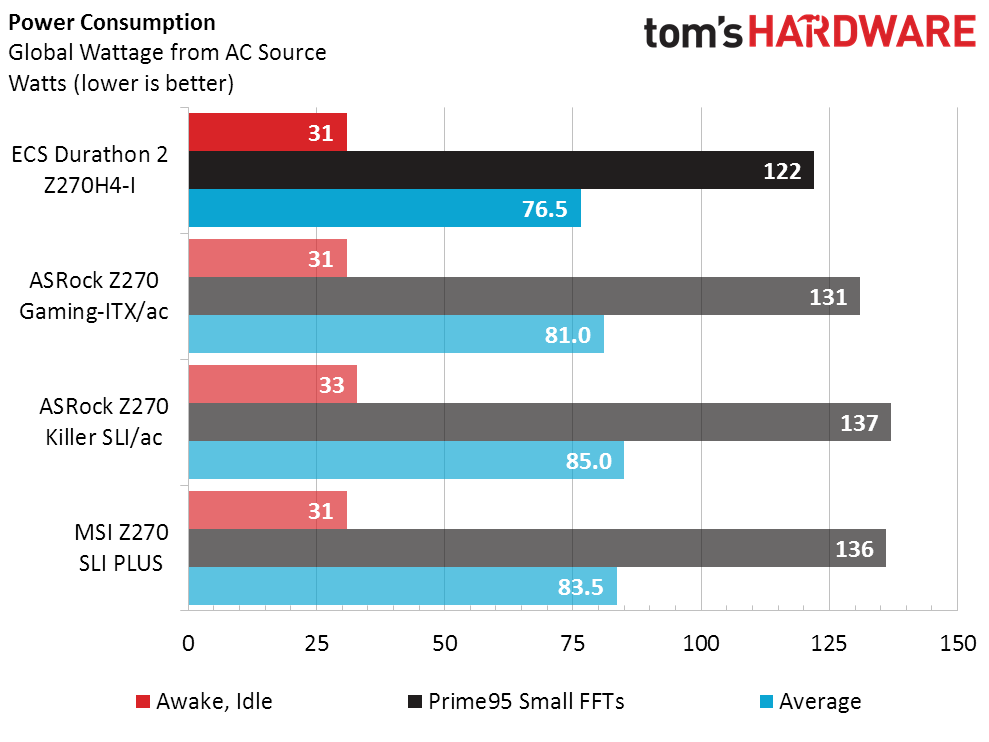ECS Z270H4-I Mini-ITX Motherboard Review
Why you can trust Tom's Hardware
Evaluation & Conclusion
Synthetic Benchmarks
The Z270H4-I stumbles slightly in 3DMark Graphics and makes a small comeback in PCMark’s Work score. The differences are small enough not to force a failure analysis, but are still a little puzzling given the platform’s restrictions.










Sandra Arithmetic doesn’t show any problems, but the Z270H4-I falls slightly behind the Z270 Gaming-ITX/ac in Sandra Multimedia. Cryptography and Memory Bandwidth show both boards on par, with the use of two single-rank DIMMs holding both slightly behind the four-DIMM boards when using a CPU that performs best with four ranks (or greater) of RAM.
3D Games




The Z20H4-I sails smoothly through Ashes, F1 and Metro, but stumbles slightly in Talos. Retesting didn’t reveal any trouble with the software, and the differences are still too small to cause a panic.
Timed Applications



Timed applications show zero abnormalities for the Z270H4-I, even in those that lean hard on memory or graphics performance.
Power, Heat & Efficiency
We enable all of the CPU’s power settings on each motherboard through firmware, and ECS’s Z270H4-I drew the lowest energy at full load. This could indicate that the board is a little more sensitive to the CPU’s default power envelope, which could also explain its occasional, slight benchmark losses. The lower power draw is similarly reflected in its CPU core temperature readings.




Remember we said “overall” and “slight?” The Z270H4-I consumes 16.2% lower-than-average power while producing only 1% less overall performance, when compared to all 13 previously-tested boards. That sounds like a fair trade-off to us, particularly if we were to consider putting it into a small case with tighter-than-average thermal limits.
Overclocking
Considering only its inability to hold a high multiplier would have us labeling the Z270H4-I a poor overclocker. Similarly, it’s inability to hold our desired voltage under full load would also have us looking at other options. Yet the other Mini-ITX option we’ve tested, the Z270 Gaming-ITX/ac, reached a lower ultimate frequency. Perhaps it’s time for us to lower our expectations of the Mini-ITX market?
Get Tom's Hardware's best news and in-depth reviews, straight to your inbox.


Mediocre memory overclocking combines with the bandwidth hit of using only two ranks of RAM on a CPU that wants four. But that doesn’t need to be a problem for buyers who haven’t already picked a set of RAM: We’re just going to recommend dual-rank DIMMs for two-DIMM boards.
A low MSRP puts the hurt on ECS’s competitors, making the Z270H4-I appear to be an extreme value. Of course its overclocking limitations might cause some builders to question why they didn’t just get an H270 model in the first place.
Comparing the Z270H4-I’s features and price to those of the Z270 Gaming-ITX/ac, we see that the ASRock board has a high-end Intel 867 Mb/s 802.11ac controller and a low-end (two-lane) Thunderbolt controller. On the other hand, the Z270H4-I has a second Gigabit Ethernet port, even if it is tied to different brand of controller than its primary network port (ie, no teaming). And, the Z270H4-I is missing two SATA ports and its competitor’s third fan connection. You may tell us that you don’t need those things, or that those things don’t require the expense of an extra controller, but those “things” are still things that other people might think about.
The Z270H4-1 is $50 cheaper than the other Mini-ITX board in today’s test, and it overclocks our CPU slightly higher despite its overclocking quirks. It can’t match that competitor on features or memory overclocking, but it still reaches a fairly-fast DDR4-3700 and still has an I/O panel full of jacks. We would certainly miss not having any USB 3.1 Gen2 ports were we to use the board, but budget builders attempting to capitalize on CPU performance without overheating their smallish cases might have other priorities. Furthermore, we can’t get an actual street price on the Z270H4-I due to availability issues that persist months after its official release. Thus, while we’d like to give it our “Recommended” award based on price alone, additional considerations have limited its notoriety to a mere stamp of approval.
MORE: Best Motherboards
MORE: How To Choose A Motherboard
MORE: All Motherboard Content

